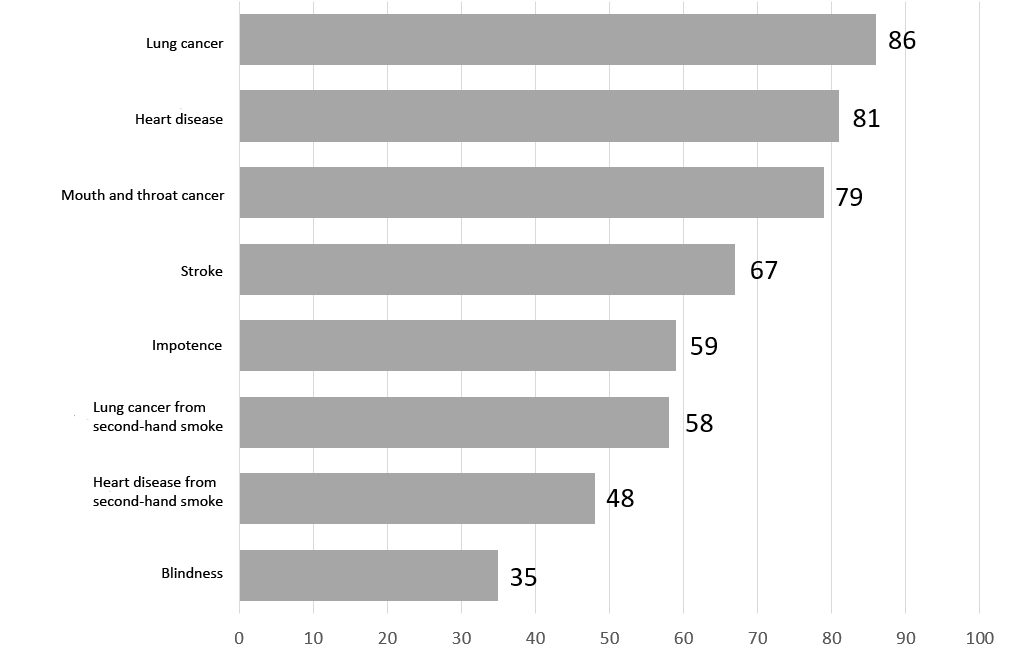Dutch smokers more aware of risks since launch of photo health warnings
Since the introduction of photos on the packaging of tobacco products in 2016, Dutch smokers have become more aware of the harmful effects of their addiction. Nevertheless, there are still gaps in smokers’ knowledge, especially among those with a low educational level. Dutch smokers also seem to be lagging behind their counterparts in other European countries when it comes to knowledge about the dangers of smoking. This is the conclusion of PhD research by health scientist Dirk Jan van Mourik, who will be defending his thesis at Maastricht University on Tuesday.
The Maastricht researcher’s PhD thesis shows that Dutch smokers’ knowledge about the harmful effects of smoking has improved since the introduction of the new photographic warnings. Smokers now also appear to be quicker to notice information about the dangers of smoking than they were prior to 2016, when packaging only carried written warnings.
Although the improvement was particularly evident among smokers with a low educational level, the knowledge gaps in this group are still the greatest. ‘Knowledge about the harmful effects of smoking is an important precondition for behavioural change and often a source of motivation to give up smoking,’ Van Mourik says.
‘Moreover, consumers have a right to be aware of the effects. Smokers with a low level of education seem to have benefited more from the introduction of the photographs, possibly because they are clearer than written warnings. Because there is still a lack of knowledge among Dutch smokers about the effects of smoking, it’s important to run campaigns to explain them.’
Comparison
Dutch smokers’ knowledge also lags behind that of their counterparts in other European countries. The Netherlands scores remarkably low when it comes to awareness among smokers about the dangers of smoking, especially regarding the harmful effects of second-hand smoke, and even in relation to lung disease.
The introduction of photographs on tobacco product packaging was part of the European Tobacco Products Directive. In comparison with smokers from countries outside the European Union where there were no changes in warnings on cigarette packets, it was only smokers in the Netherlands who soon after the pictures were launched:
- were more likely to notice tobacco health warnings
- demonstrated a higher level of knowledge about the harmful effects of smoking
- were more likely to avoid seeing warnings, for example by keeping the packet in a cover
- were more likely to say they think about the harmful effects of smoking
Van Mourik based his thesis on data from the International Tobacco Control Netherlands Project, collected by the research firm Kantar Public. The research was funded by the Dutch Cancer Society (KWF Kankerbestrijding).
Figure: Percentage of Dutch smokers in 2017 who believe that smoking causes disease, per disease.

Also read
-
No evidence of brain damage caused by severe COVID-19
Patients admitted to hospital due to a severe COVID-19 infection exhibit no evidence of brain damage caused by the disease. This is the conclusion of an extensive study led by Maastricht University.

-
Cold shivers?
Due to the Western lifestyle with a high fat diet combined with little exercise, more and more people in the Netherlands are overweight or even obese. This causes an increased risk of type II diabetes. What can be done about this besides a healthier lifestyle? The answer comes from an unexpected...

-
Quantity and Quality
Survivors of colon cancer often have symptoms associated with the cancer or treatment for years after treatment, such as fatigue and tingling in fingers and feet. This has a great impact on the perceived quality of life. Whereas current lifestyle advice is mainly aimed at prevention of (colon)...
